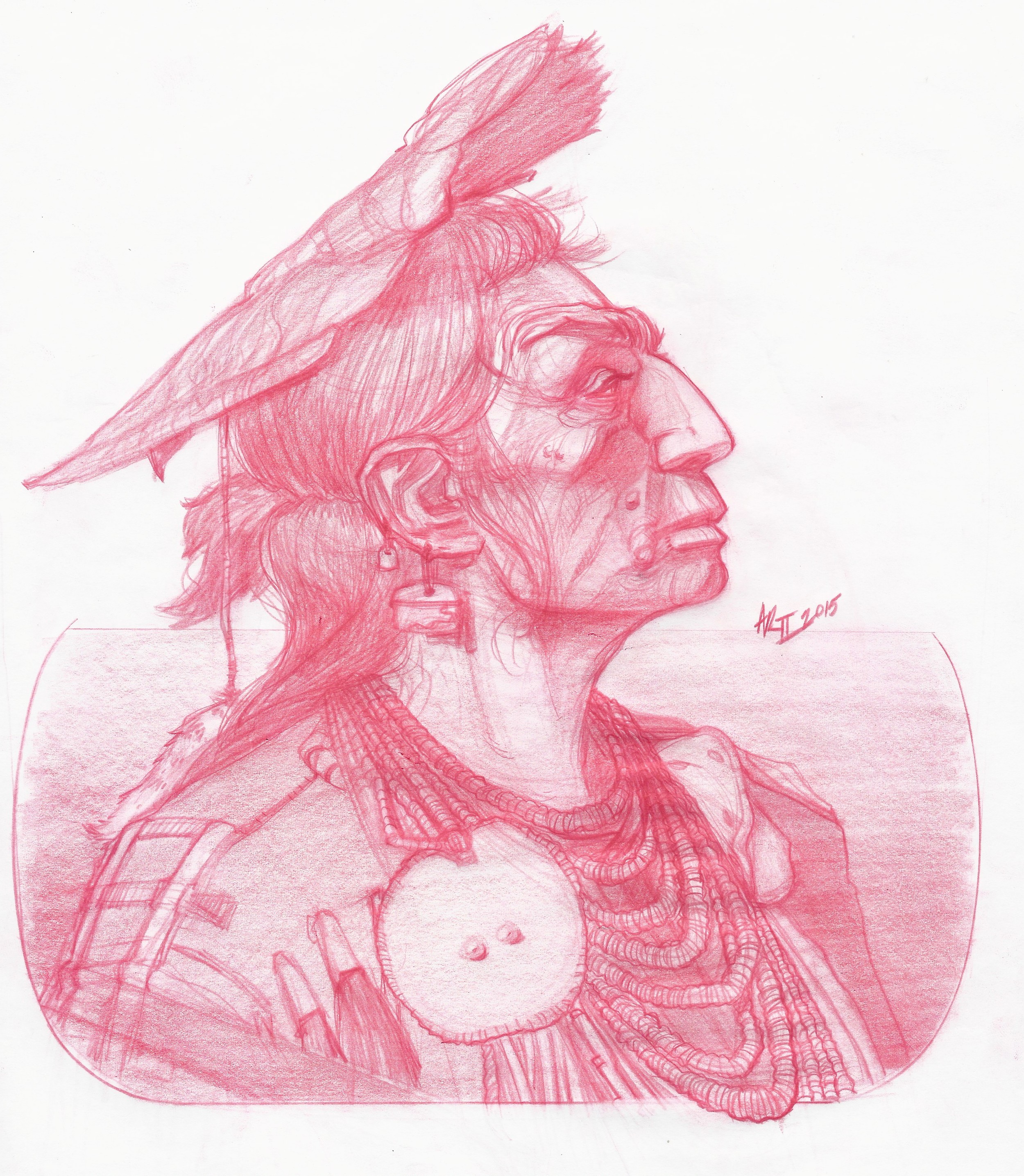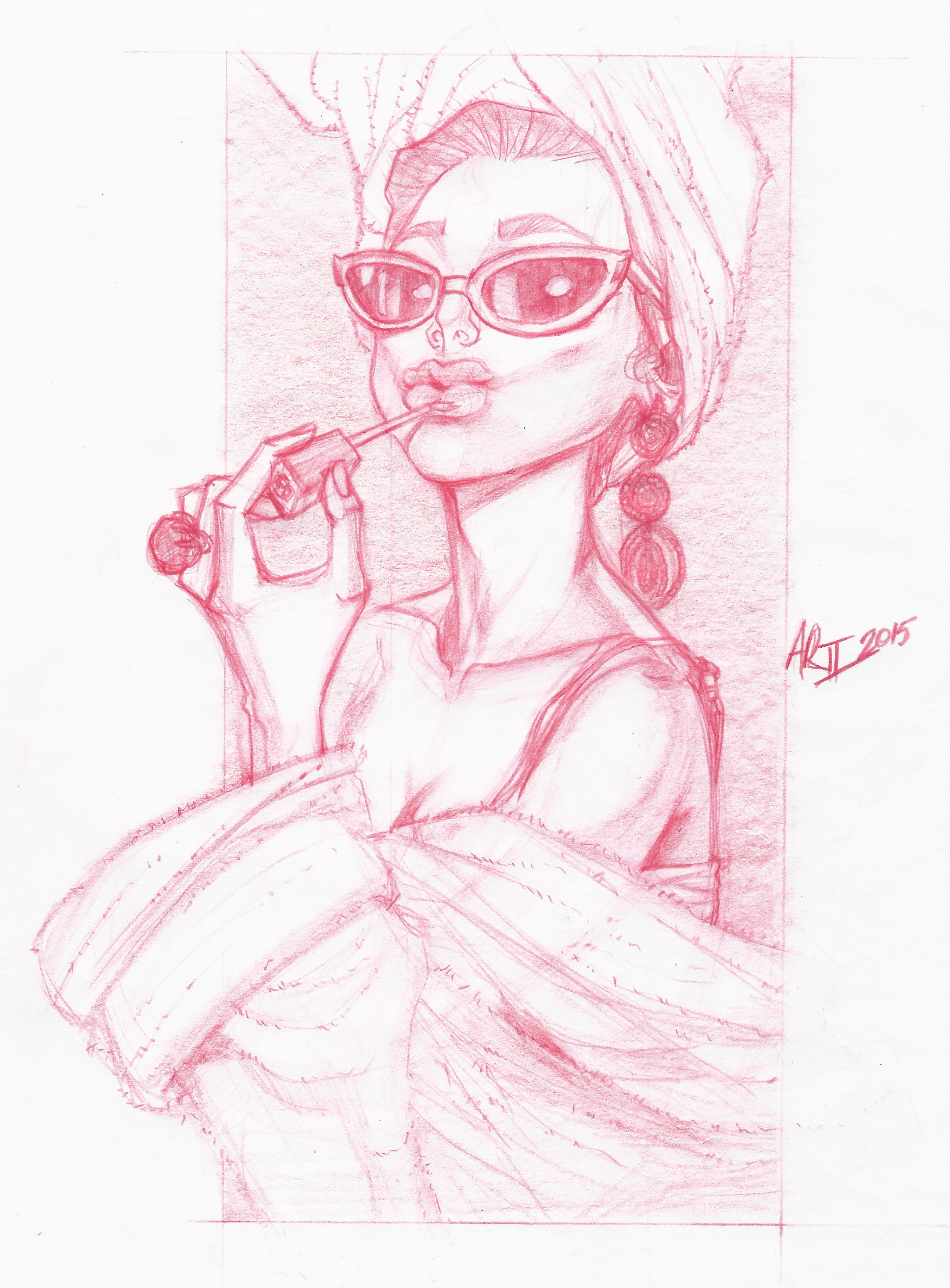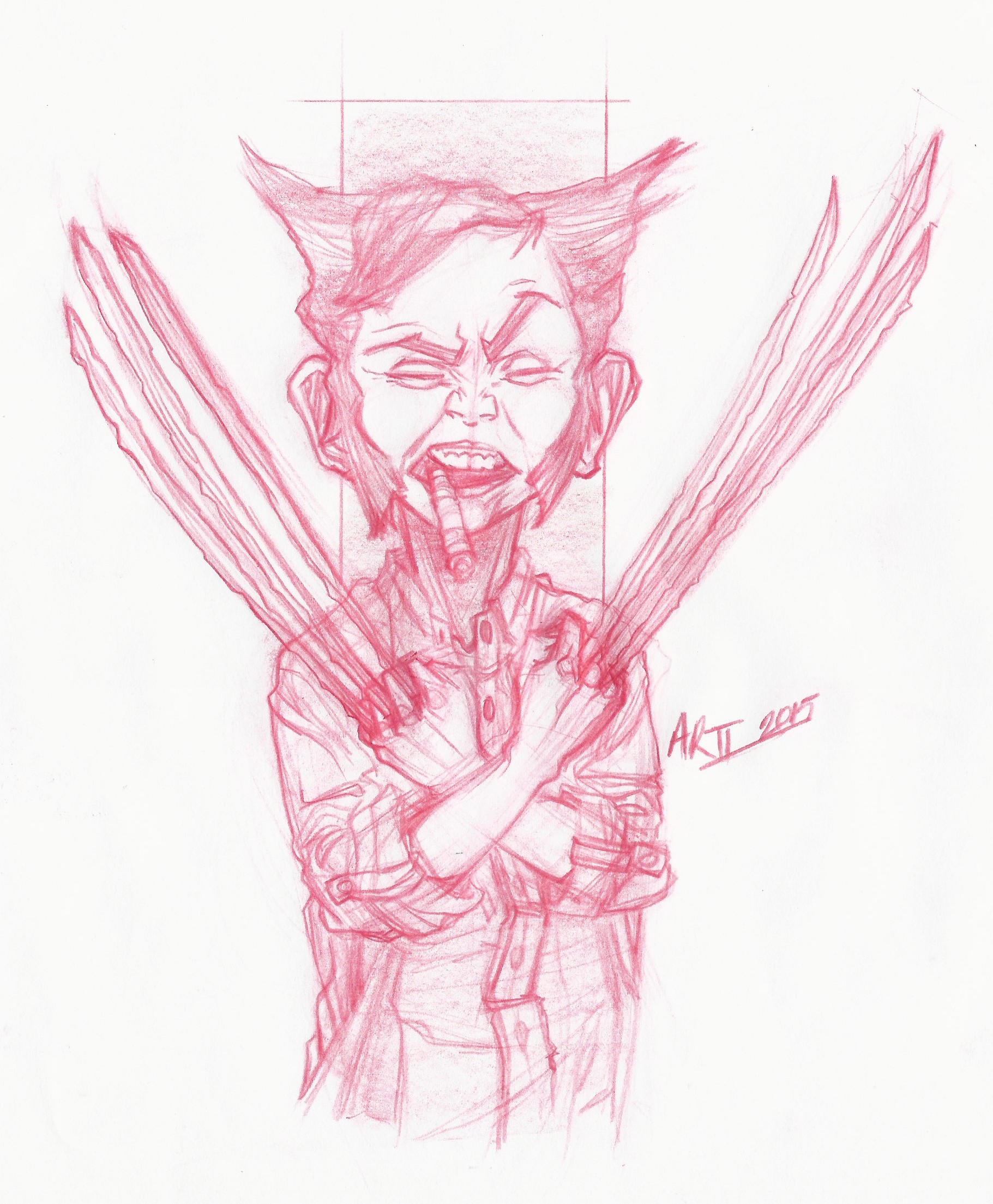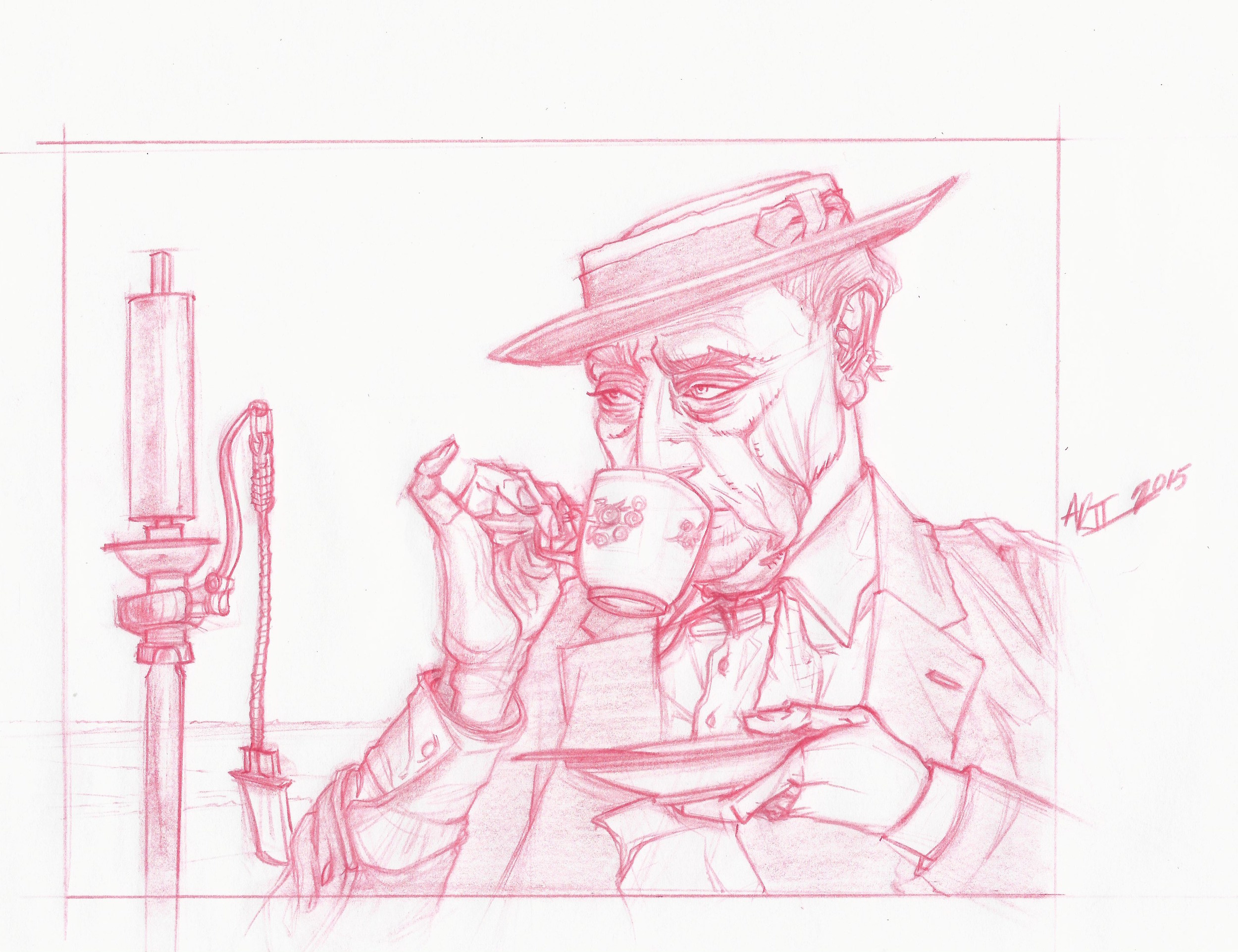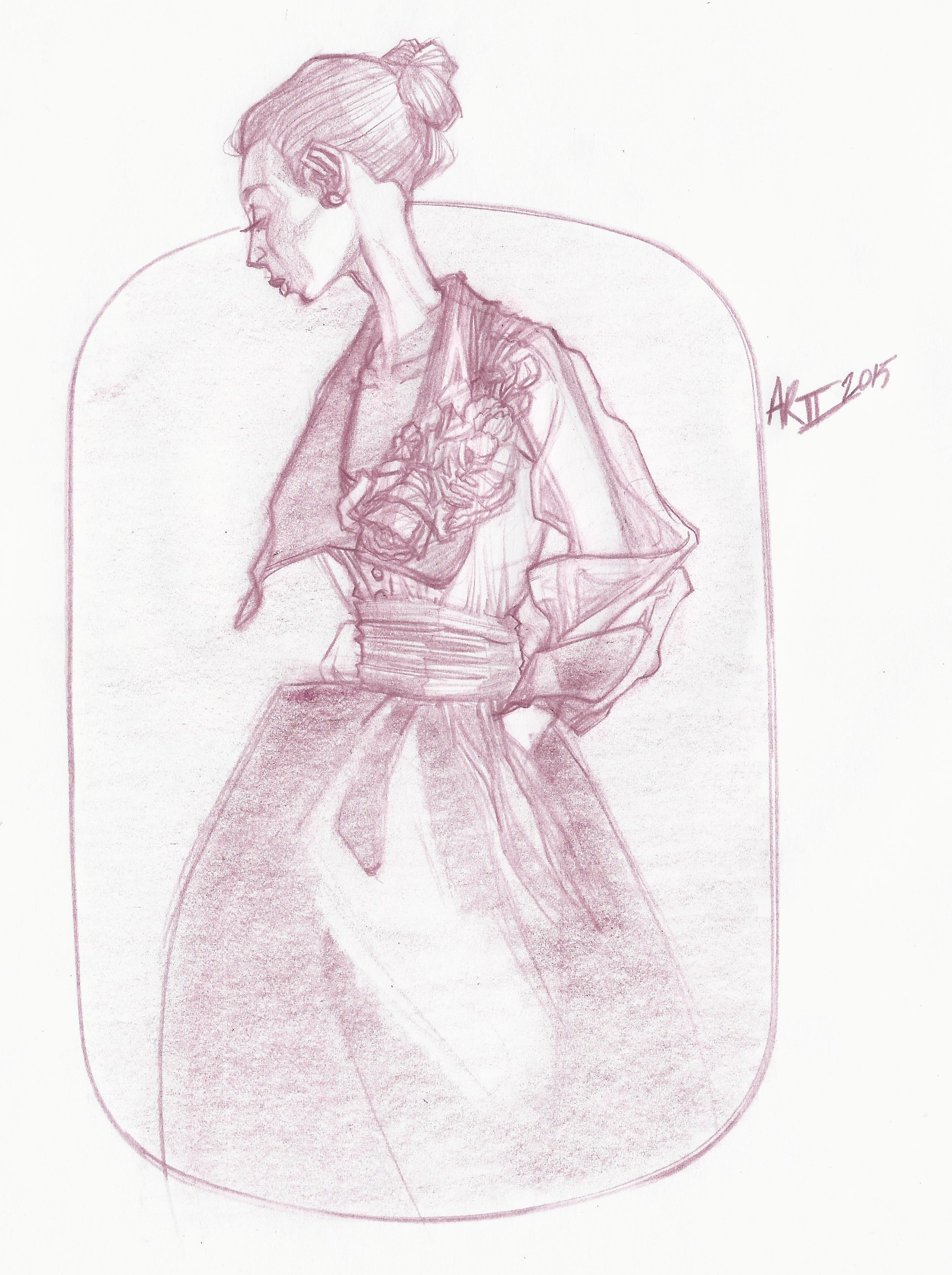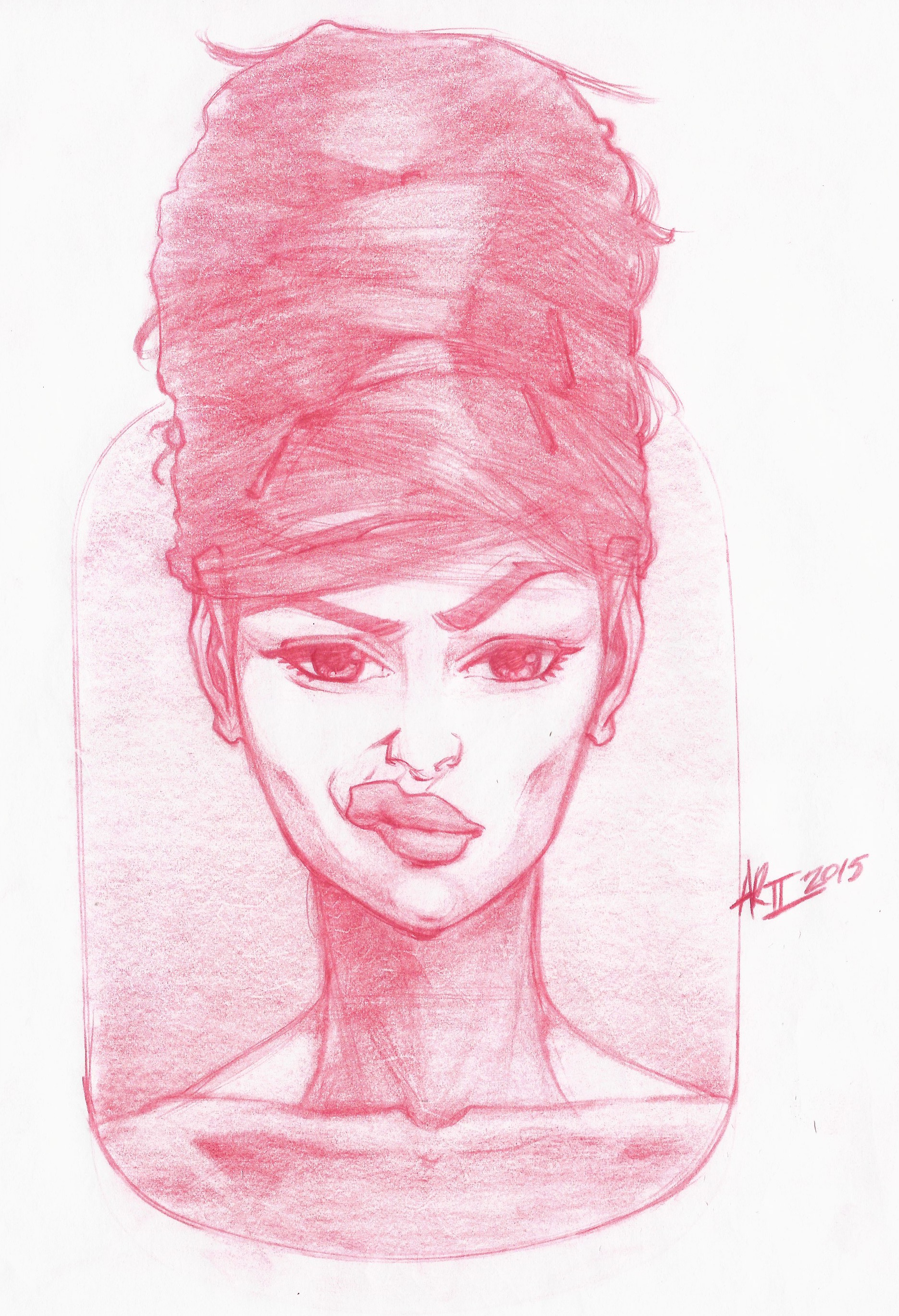Jumping jacks, jogging, and stretching are great ways to start the beginning of a strenuous workout. They will prepare you mentally and physically for your sporting activities. Have you every tried to lift something really heavy in the gym before stretching? Well, I did, a long time ago. Let's just say, I will NEVER do that again. As I still practice weight training, I believe it is very important to warm up with a brisk jog and stretch all of your limbs before lifting. After that, my weight lifting was a breeze. I use this weight lifting analogy quite often regarding drawing and inking.
Athletes and yoga masters are not the only people who do this. As artists, we should take notes from these guys and gals. I remember the days when I didn't warm up with drawing exercises. My drawings were stiff and boring. All of my figures looked like they were doing the robot dance. Most importantly, they didn't appear lifelike. With my rigged and shaky hand, I placed unnecessary pressure on myself to draw perfectly. But, how could I achieve perfection when I haven't even warmed up? I gripped the pencil as if I were writing an essay. Now, I hold my pencil like a paintbrush.
So, why should we start with warm up exercises before drawing figures and props? Warming up allows the artist to draw gesturally and build confidence. When you observe anything in nature and/or manmade, whether it's the human figure, tables, trees, cars, etc., they have a "flow" and rhythm to them. When you loosen up, you are introduced to curvy and slick lines plus smooth shading. Understanding form and movement through shapes will allow you to create lifelike objects. With these exercises under your belt, your drawings will extract the feelings and emotions from the subject.
Now, let's get into my daily drawing exercises.
It is important to note that I warm up with shapes that I use regularly in my illustrations. Spheres, ellipses, cylinders, cubes and straight lines are my "go to's." I tend to spend a least 10-15 minutes doing these exercises.
Exercise One:
First, I begin loosely sketching spheres and ellipses. Spheres are 3 dimensional circles. Ellipses are circles placed in perspective. Train yourself to do the following:
- Hold your pencil loosely (whatever is comfortable for you). As I said earlier, I hold my pencil like a paintbrush.
- Avoid moving your wrist, instead use your entire arm. You will find that completing the circle is infinitely easier to complete versus using your wrist.
Next, I overlap spheres to create a bean bag. This bean bag resembles a human torso doesn't it?
Exercise Two:
Let's move on to cylinders. Draw a cylinder by connecting two ellipses with two straight or curvy lines. Thus, creating cups, vases, bowls, etc. Cylinders are great to warm up with because they can be used for anything. I use them for drawing: necks, upper and lower arms and legs, hair, table legs, cups, pipes, etc.
Exercise Three:
With sketching a free hand cube, you are practicing perspective. I always add shading and tone just so I know were the light source is coming from. I use cubes to construct: the head, hands and feet, buildings, cars, weapons, hats and such. It is imperative to draw cubes with different horizon lines and vanishing points. Remember to draw them free-handed.
Exercise Four:
The last exercise is drawing free-handed straight lines. I start by penciling two dots apart from each other. Then, I try my best to connect the dots with one clean, fluid and precise stroke. For me to make a straight line, I angle my paper diagonally and draw left to right. The trick to drawing a straight line is to look at the ending dot when connecting them. This exercise takes a lot of practice. When you have completed a few of these, begin challenging yourself. Gradually make the dots further apart. If that's not hard enough, pencil more than two dots and connect them.
Now that the stretching and sweating has begun, you're ready to move on to the heavy lifting of the drawing process.
Everything we practiced earlier can be applied to your everyday drawing. If you want to draw an eye, arm, torso, or even a pistol, you can! The eye is literally a sphere underneath a bean bag. The human arm is composed of two cylinders with ellipses on top to depict muscles. The torso is a mash-up of a slightly elongated sphere sitting inside of a cube. The arm and torso I sketched here are loose and rhythmic. The pistol was drawn with straight lines and cylinders.
I start my daily drawings with these four (4) exercises. They have improved my drawing abilities and confidence. If you can master drawing and toning the sphere, cylinder, and cube, while in perspective, you can literally draw anything. I hope this helps.
Stay tuned for my next blog post.
Thanks for stopping by!

